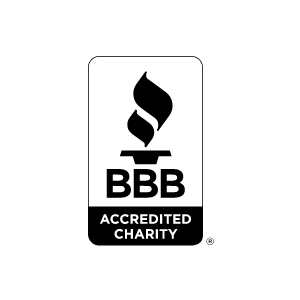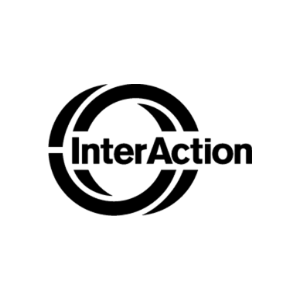What about the medical use of gold and silver?
Islam exempts gold and silver for medical prosthetic and implant uses (e.g., for teeth, middle ear reconstruction, restorative upper eyelid function, ocular prostheses, stents, and so on).
Why is women’s jewelry exempted?
Islam exempts women’s jewelry from Zakat in customary amounts and proportions for three reasons:
God has permitted human extraction of material boon from the earth for use: Gold, silver, stones, and gems, whether from land or sea: He alone let forth the two waters, [salty and sweet]. …Out of them both come pearls and coral. Then which of your Lord’s blessings will either of you deny? (Surat Al-Rahman, 55:19-23).
He has sanctioned women to adorn themselves with these extractions as accessories for personal, permissible “use,” so long as this is their primary utility, not as accumulated, growing assets: And He alone is the One who has subjugated the sea for you, such that from it …you bring forth ornmanets that you wear (Surat Al-Nahl, 16:14).
Zakat does not target possessions for alms because of their intrinisic value or preciousness. It marks worldly assets that grow personal wealth for material purification and redistribution by assigning a fraction of them to the poor, straightened, and deserving as an obligatory charitable right.
Are there Muslim scholars who deem women’s jewelry Zakatable?
Yes. Some scholars, including the Hanafis, consider gold and silver Zakatable wealth, regardless of their form. Others hold that transforming gold and silver out of their monetary form and into articles of personal adornment makes them like clothing, furniture, and personal use items, categories of possessions recognized as not subject to Zakat.
Is the position that women’s jewelry is Zakat-exempt stronger?
Yes, for 10 reasons:
The prophetic statements scholars use to support Zakat on jewelry are controversial regarding their authenticity; or subject to interpretations that also disallow Zakat on women’s jewerlry; or specify Zakat for its presence in extravagance; or, perhaps, apply uniquely to the wives of the Prophet, on him be peace.
The Quran’s statement that prohibits Muslims from hoarding gold and silver strongly indicates that this means in their forms as currency, as minted money or measured, circulated exchanges of value. “Yet as for those who hoard up gold and silver and do not ‘spend’ it in the path of God…” (Surat Al-Tawbah, 9:34).
Zakat is imposed on growth assets only, not on items of personal use. Jewelry is unquestionably meant for personal use. Muslim scholars, moreover, agree on the allowance of jewelry for women, as well as the permissibility of gold and silver for women in the form of jewelry.
Scholars, including the Hanafis, agree that Zakat exempts items of intrinsic value — even expensive articles — for personal use, like draft and riding animals, tools of craft or trade, and houses of primary residence. By analogy, scholars exempt from Zakat other things that are principally for personal use — cars as means of personal transportation, for example, a farmers’ equpiment, a scholar’s books, furniture, clothing, utensils, and so on. It is inconsistent to sanction from Zakat these possessions as personal use items while not allowing jewelry women wear (that is not extravagant in amount or measure or intended for investment) as articles of personal use.
The Quran expressly permits women to wear extracted gems and stones as jewelry. Sunni scholars agree no Zakat is due on them. They also unanimously acknowledge the permissibility for women to wear gold and silver as jewelry. The analogy between gems and precious stones worn by women as jewelry, and gold and siliver that women don as jewelry is virtually seamless. Why would one form of permissible jewelry be Zakat-exempt and its other lawful form be Zakat-liable? It cannot merely be a matter of the intrinsic value of gold and silver, for a set diamond or string of pearls may well cost much more than a gold or silver article of jewelry. Shaykh Yusuf Qardawi further observes that this discrepancy would seem to penalize women of less means for their common jewelry type and exempt women of fortune for their more exclusive kind.
One pays Zakat out of the wealth it is obligated upon because Zakat comes out of the ‘increase’ of that ‘growth’ asset itself. Zakat’s aim is to preserve the asset for its owner, or, in the case of currency, to encourage its recirculation before Zakat consumes it. This is universally true of Zakat, except where there is a specific, prophetic designation otherwise, as in the special case of sheep in Zakat for camels, up to a certain number (see endnote 3 in How Is Zakat Calculated on Wealth). Indeed, the point of this substitution, again, is to preserve the increasing wealth asset for its owner. Yet Zakat from jewelry cannot be paid out of the ‘increase’ in jewelry itself because it does not grow as jewelry. The only way to achieve that Zakat, then, is by its liquidation to convert it back into its original gold or silver monetary form, which Islam requires for no other Zakatable wealth kind.
When the condition for Zakat, namely intended growth, is added to something, as with an investment, Zakat becomes due on it when it meets its threshold (nisab). When that intention of growth is subtracted from gold and silver, by making them into wearable accessories for women in the form of jewelry, then the reason for Zakat on them is also removed.
There are clear, noncontroversial reports from the prominent Companions Aisha, Abdullah ibn Umar, Asma bint Abu Bakr, and Anas ibn Malik, God be pleased with them, that there is no Zakat on women’s jewelry, meaning also of gold and silver. Also, the Companion Al-Hasan, the Prophet’s grandson, on the Prophet and his family be peace and God’s blessings, said: “I know of none of the Rightly Guided Caliphs who said there is Zakat on adornments,” meaning women’s jewelry (Bukhari).
Ibn Mas‘ud is authentically reported to have paid Zakat on the jewelry of the women of his household, but not as obligating it generally on people. (A similar report of another Companion is disputed.) Shaykh Yusuf Qardawi remarks it “may be an indication of their piety” in a matter “on which they do not have a ruling from the Messenger, on him be peace” (Fiqh Az-Zakat, 198).
There are reasonable indications that the only Zakat in-kind women are responsible for in their jewelry is lending of it to other women.
Can the question of Zakat on women’s jewelry be summarized?
no zakat on jewelry in two cases:
Women’s jewelry for personal use — whether of gold or silver, or other precious metals, gems, and stones — that do not exceed customary amounts or commonly accepted measures of dimension and value.
A plain silver ring for men, or a silver-handled sword, or one with a silver-ornamented hilt, provided it is of real use and not a decorative piece.
pay zakat on jewelry in three cases:
On gold and silver jewelry kept as a store of value for the purpose of investment or increasing its worth, when it equals or exceeds the market value of 85 gm of pure gold in its appraised value (not mere weight). This is added to one’s other gold and silver holdings to determine nisab and due Zakat.
On all jewelry or ornamentation in unlawful forms and used as decorations, utensils, or art (which Islam proscribes); or prohibited jewelry worn by men.
On all jewelry considered, in the common sense, extravagant, either in dimension, value, or amount, whether one wears it or not. (Islam forbids extravagance.)
What is the nisab and Zakat rate paid on jewelry?
When paying Zakat on lawful jewelry holdings, its Zakat threshold, nisab, is equal to the current market value of 85 gm of pure gold — determined not by weight, but in appraised value for each item. It is paid yearly at the rate of 2.5 percent.
Zakat is due on all jewelry holdings that are unlawful — because of form, use, or excess — at 2.5 percent of appraised market value, whether or not these unlawful holdings reach nisab.
Finally, these rules apply whether the acutal right of the jewelry’s legal ownership belongs to a man or a woman.







